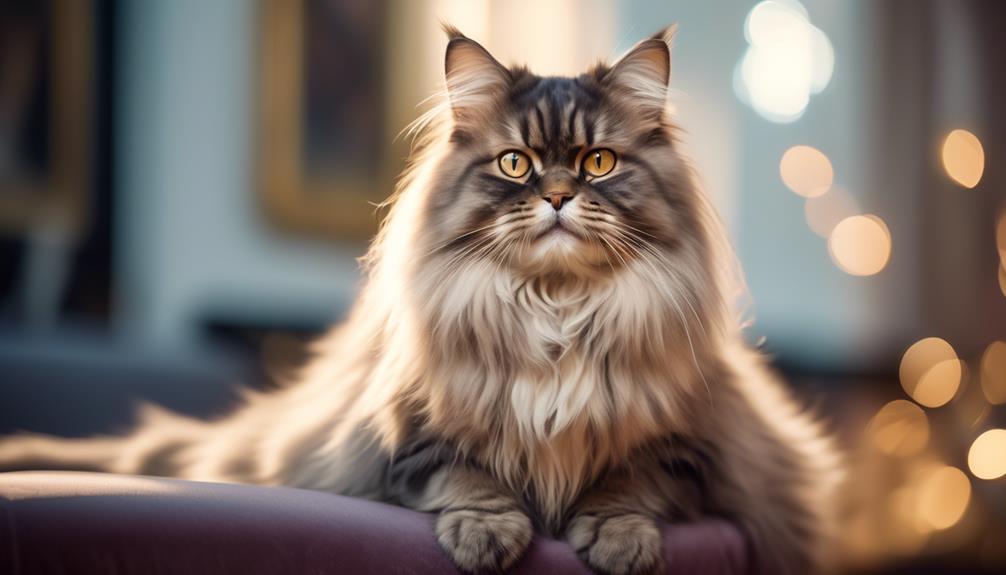
The British Longhair mixed cat breed is an intriguing and captivating feline that has gained popularity among cat enthusiasts.
Originating from the United Kingdom, this medium to large-sized cat possesses a striking appearance with its long, dense coat and a silky undercoat.
But there is more to this breed than just its stunning looks.
With a reputation for being affectionate and loving towards its family, the British Longhair is a companion like no other.
However, potential owners should be aware of certain aspects of their care and characteristics.
From grooming needs to health considerations, this breed requires attention and understanding.
So, keep reading if you’re curious to learn more about the British Longhair mixed cat breed and its unique characteristics.
Key Takeaways
- The British Longhair is a medium to large-sized cat breed with a long, dense coat and a soft, silky undercoat.
- They are affectionate with their families and generally have a friendly and loving personality.
- Regular grooming is necessary to maintain their coat and prevent matting and hairballs.
- They can live happily with children and other pets, but early socialization and supervision during introductions are important.
Origin and History
The origin and history of the British Longhair cat breed can be traced back to the United Kingdom, which was created through the crossbreeding of the British Shorthair and Persian breeds.
This crossbreeding resulted in the creation of the British Longhair, a medium to large-sized breed.
The British Longhair was officially granted championship status by The International Cat Association (TICA) in 2009.
Despite their popularity, British Longhairs can still be found in shelters or rescue groups, so adoption is always an option.
These cats are known for their loving and friendly nature, as well as their tolerance and sociability.
They require regular grooming due to their long, dense coats but are generally considered healthy cats.
Regular wellness visits with a vet are recommended to ensure their well-being.
See another cat breed profile.
British Shorthair Cat Breed
Size and Appearance
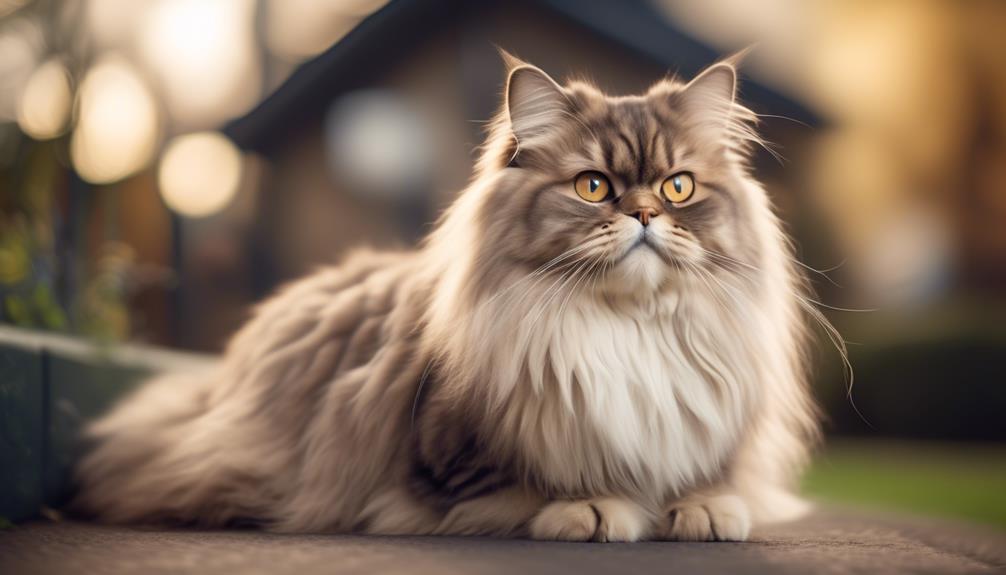
Medium to large, the British Longhair cat is known for its distinct appearance and striking features.
This breed has a sturdy, muscular build, broad chest, and strong legs.
The British Longhair has a round head with full cheeks and large round eyes that are typically copper or gold in color.
Their ears are medium-sized and set wide apart.
One of the most notable characteristics of the British Longhair is its luxurious, dense, and long coat.
This breed has a soft and silky undercoat, which gives their fur a plush and cuddly texture.
The coat comes in various colors and patterns, with blue being the most popular.
Personality and Behavior
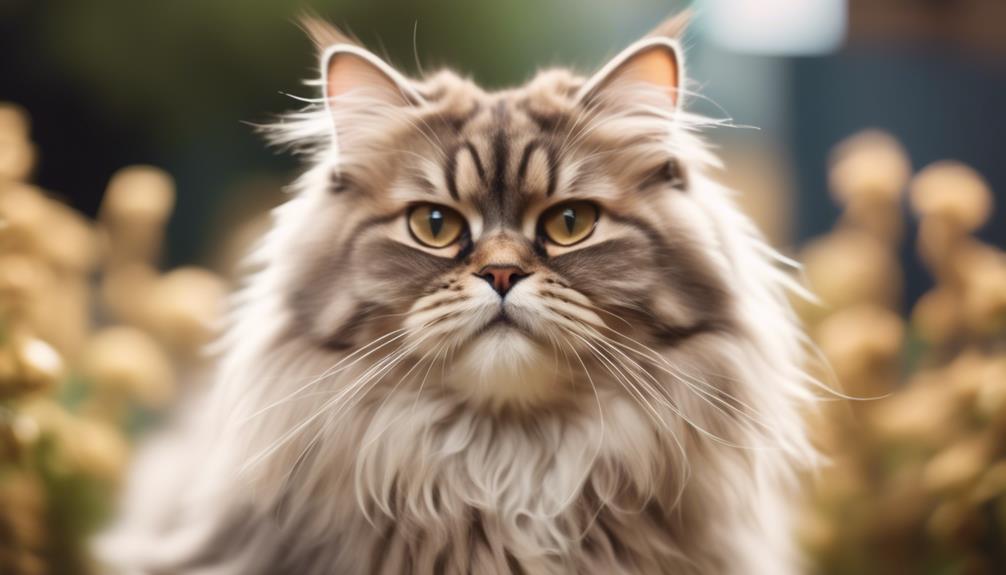
After exploring the size and appearance of the British Longhair cat, it is now important to delve into its distinctive personality and behavior.
Personality Traits:
- Loving and friendly: British Longhairs are known for their affectionate nature towards their family members. They enjoy being around people and seek attention and cuddles.
- Sociable: These cats are usually sociable and get along well with other household pets, although early socialization and boundaries are important.
- Independent and low-key: While they enjoy human companionship, British Longhairs are independent and can entertain themselves when necessary.
Behavior Characteristics:
- Regular grooming requirements: Due to their long and dense coat, these cats require regular grooming to prevent matting and reduce hairballs.
- Generally healthy: British Longhairs are considered generally healthy cats, but regular wellness visits with a vet are recommended to monitor for any potential health issues.
Grooming and Care
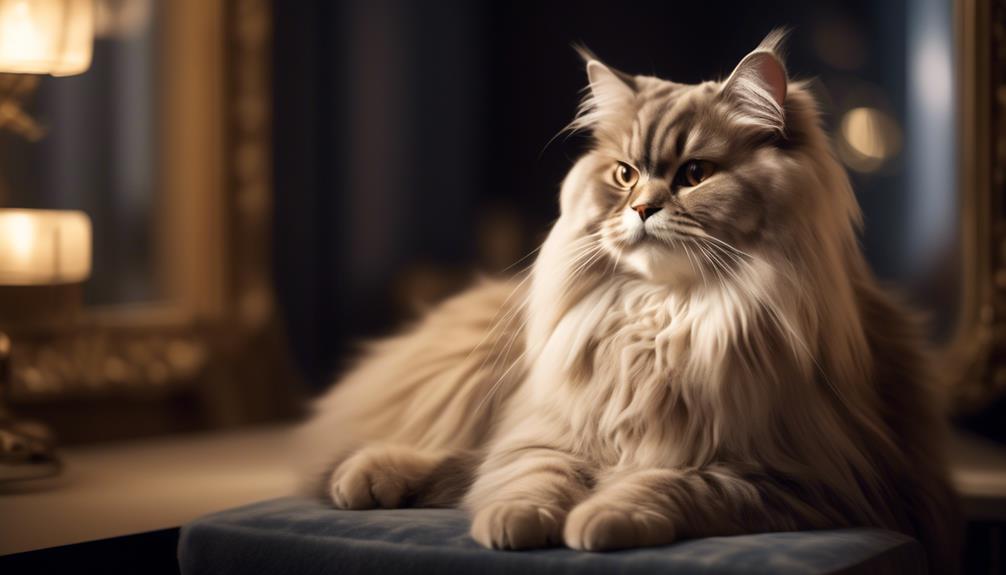
Regular grooming is essential for maintaining the long and dense coat of the British Longhair cat breed.
The coat of the British Longhair is long, dense, and has a soft, silky undercoat.
Daily brushing is recommended to prevent matting, with longer brushing sessions required during shedding seasons. This will help reduce the formation of hairballs and keep the coat in good condition.
In addition to brushing, regular grooming practices should include checking and cleaning the ears for dirt or infection, trimming the nails, and starting a regular tooth brushing regimen.
Providing a scratching post is also important for healthy scratching behavior.
British Longhair cats are adaptable to most climates, but providing shade and fresh water is important to keep them comfortable.
Health and Common Issues
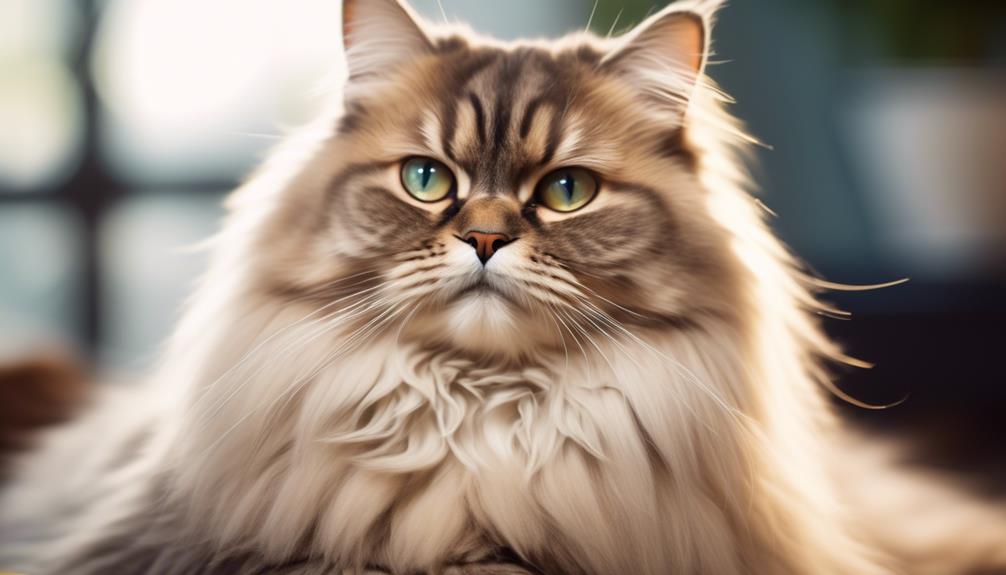
The health and common issues of the British Longhair cat breed should be carefully considered by potential owners.
While generally considered healthy cats, a few common health problems may affect them. These include:
Genetic Conditions:
- Renal Polycystosis (PKD): A hereditary kidney disease that can cause kidney failure.
- Neonatal Isoerythrolysis (NI): A blood type incompatibility between the mother and kittens, leading to severe anemia in the kittens.
Other Possible Health Issues:
- Hairballs: British Longhairs are prone to developing hairballs due to their long, dense coats. Regular grooming can help reduce their occurrence.
- Dental Problems: Like many cat breeds, British Longhairs may develop dental issues such as tartar buildup and gum disease. Regular teeth brushing can help prevent these problems.
Potential owners should be aware of these health issues and provide regular veterinary care to ensure the well-being of their British Longhair cats.
Compatibility With Other Pets
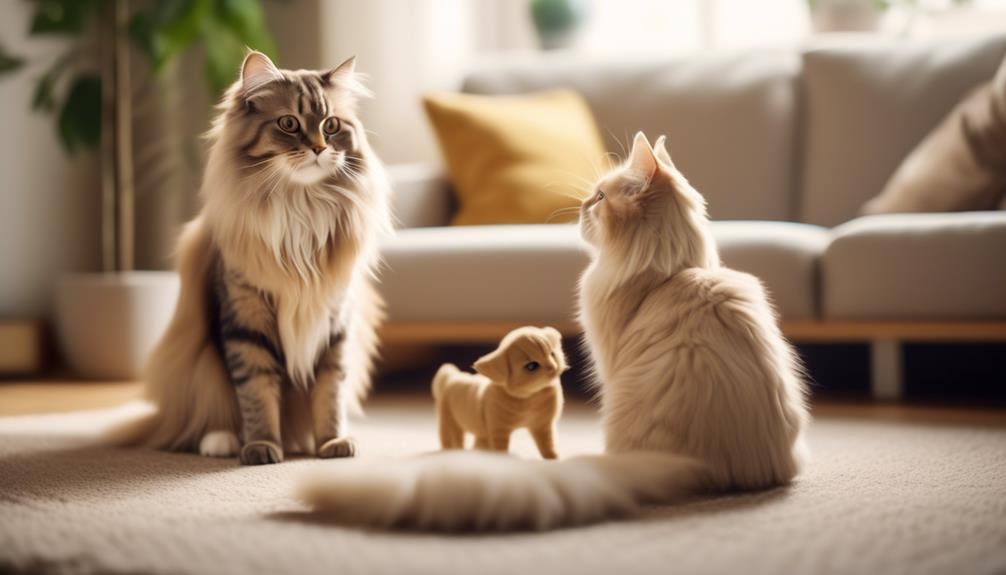
When introducing a British Longhair cat to other pets, early socialization and setting boundaries are essential for a harmonious coexistence.
British Longhairs are usually fine with other household pets, but it is important to supervise their early interactions.
Starting the socialization process early can help establish positive relationships between your British Longhair and other pets.
Rewarding good behavior during the introduction to the family can also reinforce positive interactions.
It is important to remember that each cat has its personality and may have different levels of compatibility with other pets.
Therefore, monitoring their interactions and intervening if any conflicts arise is crucial.
With proper socialization and guidance, British Longhairs can live happily with other pets, creating a peaceful and loving home environment.
Rescue Groups and Adoption Options
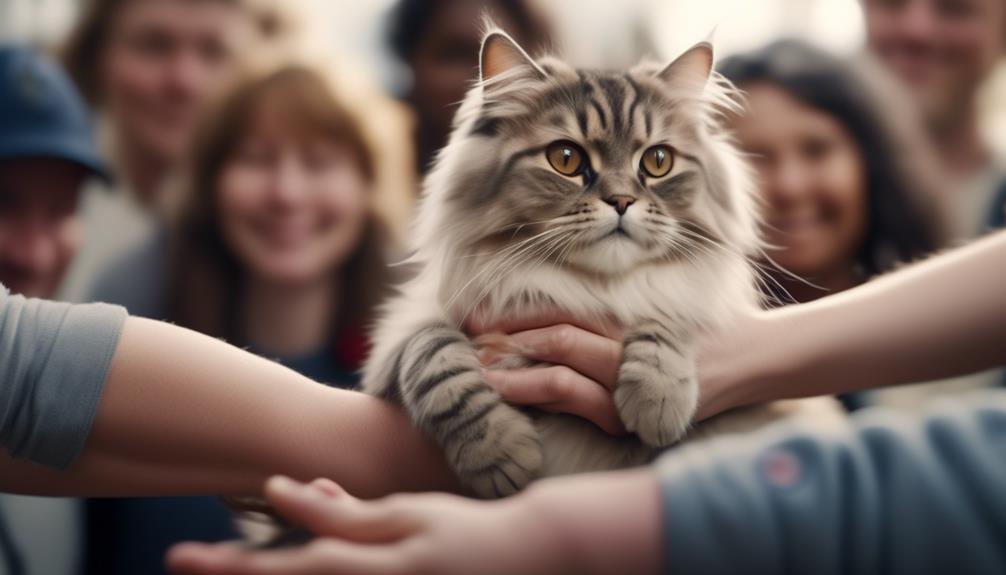
After ensuring compatibility with other pets, individuals interested in adding a British Longhair to their family can explore different rescue groups and adoption options.
Regarding rescue groups, breed-specific rescues for British Longhairs may be hard to find.
However, they can try checking out British Shorthair or Persian breed-specific rescues, as these breeds are closely related to the British Longhair.
In addition to breed-specific rescues, individuals can also check shelters and rescues for all types of cats.
Some nonprofit rescues they can consider include Persian and Himalayan Cat Rescue, Hope For Paws, Best Friends Animal Society, Purebred Cat Rescue, and Pets4Homes (UK).
These organizations often have cats of various breeds and can help individuals find their perfect British Longhair companion.
Frequently Asked Questions
Are British Longhair Mixed Cats Hypoallergenic?
British Longhair mixed cats may not be hypoallergenic. While individual reactions vary, the breed’s long, dense coat can contribute to allergens.
It’s advised to spend time with the cat before bringing it home to assess any potential allergic reactions.
How Often Should a British Longhair Mixed Cat Be Bathed?
The frequency of bathing a British Longhair mixed cat depends on individual factors such as coat type, lifestyle, and overall cleanliness.
Generally, cats are self-groomers and do not require frequent bathing unless they have specific medical or hygiene needs.
It is recommended to consult with a veterinarian for personalized advice on bathing frequency for your specific cat.
What Is the Average Lifespan of a British Longhair Mixed Cat?
The average lifespan of a British Longhair mixed cat is 12-16 years.
However, it’s important to note that individual lifespans can vary depending on various factors such as genetics, overall health, and the quality of care provided.
Do British Longhair Mixed Cats Require a Lot of Exercise?
British Longhair mixed cats do not require a lot of exercise. While they benefit from regular play sessions and interactive toys, they are generally low-key and independent.
Focus on mental stimulation and provide opportunities for exercise through play.
Are British Longhair Mixed Cats Prone to Obesity?
Yes, British Longhair mixed cats can potentially be prone to obesity.
Monitoring their diet and exercise regularly is important to prevent weight gain and maintain their overall health and well-being.
Conclusion
In conclusion, the British Longhair mixed cat breed is a medium to large-sized feline originating from the United Kingdom.
They make excellent companions with their affectionate nature, adaptability to different climates, and compatibility with children and other pets.
Regular grooming and wellness visits with a veterinarian are important for their well-being.
For those interested in adopting a British Longhair, exploring breed-specific rescues or checking local shelters and rescues is recommended.




